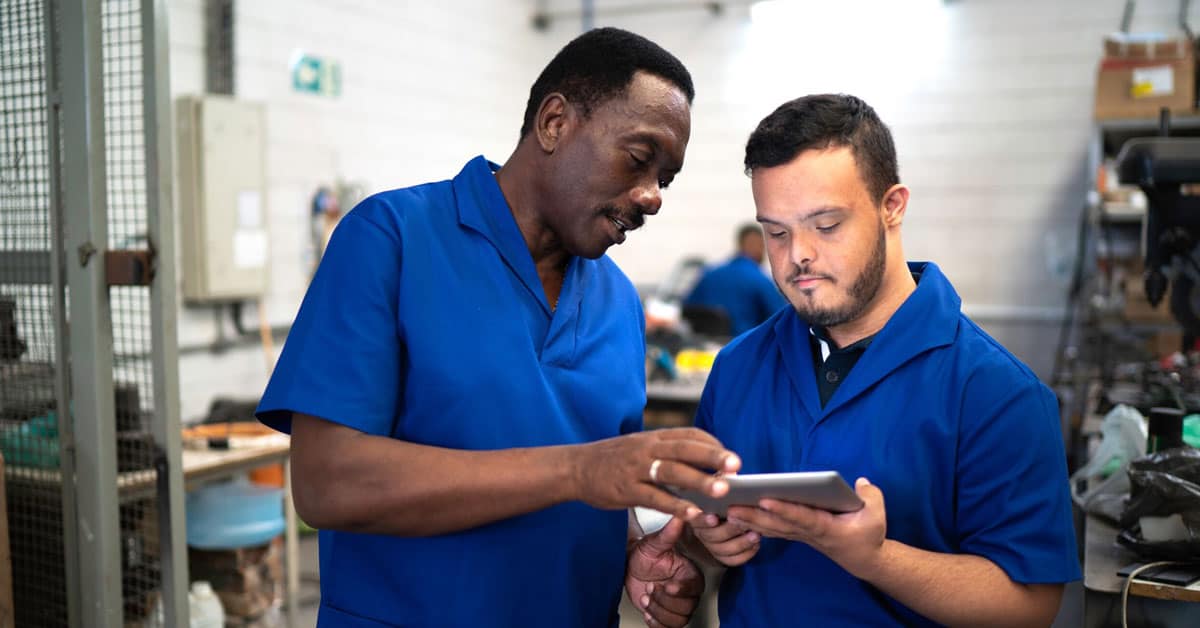About Supported Employment
What is supported employment?
Supported employment starts with the belief that everyone who wants paid employment can attain it, if the proper supports are in place. It is a successful, accepted and flexible model for assisting individuals experiencing disability to obtain meaningful and fairly compensated work.
A partnership between job seeker, support person and employer, supported employment takes a person-centred, individualized approach. Job seekers receive support tailored to their specific skills and career goals. Employers are supported with advice and resources to help meet their unique labour needs.


Who benefits from supported employment?
All parties benefit from supported employment:
- Job seekers find competitive employment.
- Businesses hire valuable workers.
- Workplace culture is improved by a diverse and inclusive environment. There is a strong business case for ensuring a diverse workforce at your company.
Within the supported employment model, all employees work under the same terms and conditions, including equal compensation, equal access to benefits, a safe workplace and opportunities for advancement.
Find a Service Provider
View and search our current membership of people and organizations committed to employment inclusion.
You can search for CASE Members by location using the simple search box below. We will be adding more listings and more search features in the weeks to come, allowing you to filter by category and keywords.

The Supported Employment Model: 6 Steps
The supported employment model is extremely flexible. Each person’s journey to regular employment will look different and will be tailored specifically to them. Even so, six fundamental steps are at the heart of the model:
01
Job Seeker Engagement
Many potential job seekers receive social and/or family support. They may wish to find employment as a way of improving their quality of life, but they aren’t sure where to begin or if they should. Service providers can encourage potential job seekers to take the next step.
02
Skills Assessment/Vocational Profiling
Service providers work with the job seeker, as well as family members and other care providers, to identify career goals, interests, preferences, skills and supports needed. The goal is to pinpoint the ideal type of employment for the job seeker.
03
Employer Engagement
Just like the job seeker in Step 1, the employer may not know where to start. How do they remove recruitment or employment barriers? How do they find the right worker? What changes need to be made to the physical workplace and workplace culture? Service providers can provide resources and expertise to ensure a successful placement.
04
Job Analysis
Job analysis is about more than matching a person with an opening. All aspects of the job and the workplace must be considered to ensure the correct candidate is chosen. Modifications or assistance requirements are identified and arranged.
05
Workplace Support
Appropriate levels of support must be offered to ensure a smooth transition into the workforce. Individual development plans are designed. Employers and colleagues are, where appropriate, involved in training and support. The service provider may also provide support outside of work.
06
Career Development
People who experience disability, like other employees, generally do not aspire to stay in the same job their whole lives. Supported employment should include ongoing training, increasing responsibilities, and other opportunities.
Want to know more about us?
Click on the links provided to learn more about CASE.
Newsletter
Sign up for our e-newsletter and stay current with all the latest from CASE and supported employment work across Canada and beyond. You’ll also receive our latest promotions and offers. We will not share your email address with any third-party vendors. See our Privacy Policy (at the link below under Quick Links) for full details on how we protect your personal information.
Connect With CASE
Tell us about new, innovative supported employment initiatives your organization is spearheading. Please send us your ideas or advice on how CASE can better serve you.








